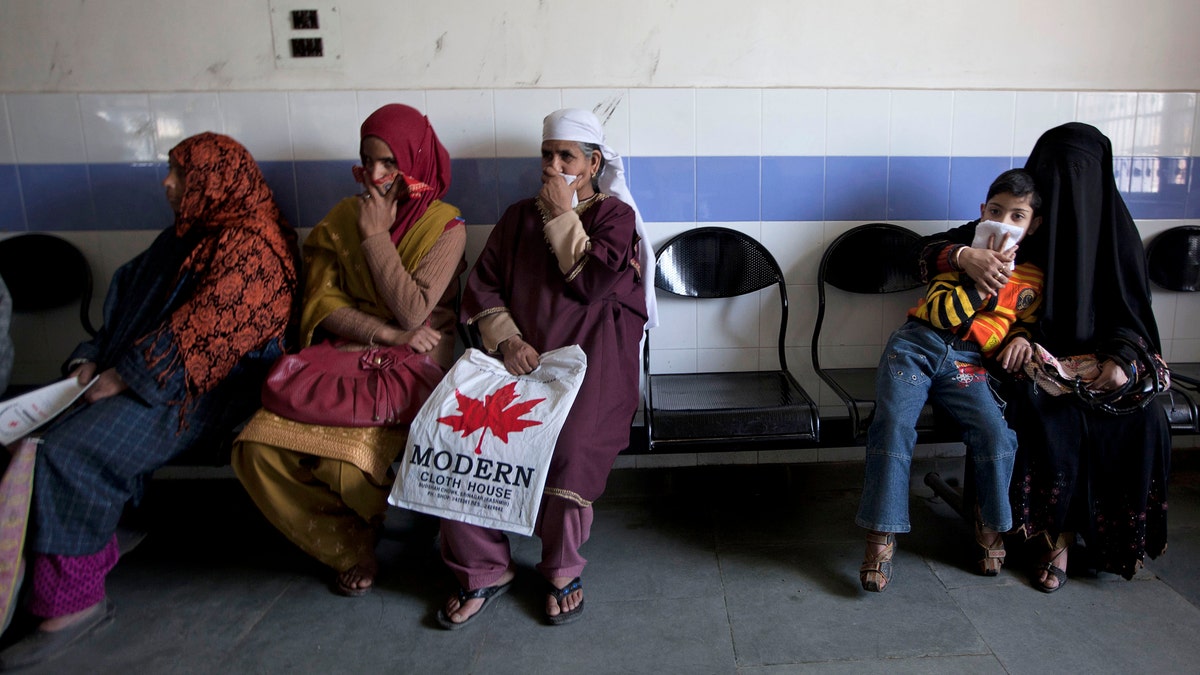
A child waits along with Kashmiri women for his turn to be examined at the Chest Disease Hospital on World Tuberculosis Day in Srinagar, India. Health officials are embarking on an ambitious plan to wipe out tuberculosis in children even though they don't know exactly how many cases there are. (AP Photo/ Dar Yasin, File)
Health officials are embarking on an ambitious plan to wipe out tuberculosis in children worldwide, even though they don't know exactly how many cases there are.
Experts say tuberculosis in children - defined as people under the age of 15 - has often been overlooked because there isn't a reliable diagnostic test and its symptoms are similar to many other childhood illnesses. Also, because children don't spread the disease, it hasn't been considered a major public health problem.
"We think that in some regions, up to 90 percent of children with TB are not being reported," said Dr. Steve Graham of the International Union Against Tuberculosis and Lung Disease. He was one of the authors of a strategy issued Tuesday by many health and advocacy groups, including the World Health Organization, UNICEF, and the U.S. Centers for Disease Control and Prevention. The plan identifies 10 priorities, including treating children preventively if family members already have TB, and training health workers to spot the disease in kids. It says that stopping children from dying of TB is "within our grasp."
TB is a treatable bacterial disease usually spread by coughing or sneezing - but young children don't cough strongly enough to pass on the bacteria. It is the second-leading killer among infectious diseases after AIDS.
The new plan will cost an estimated $120 million per year, but it's unclear if donors will invest; there is already a projected $21 billion shortfall for global efforts to fight TB until 2015.
According to the new plan, WHO estimates that TB infects about 500,000 children every year and kills around 74,000. But there was no breakdown of where cases were geographically and the figures were based on the agency's 2012 TB report, which said it was too complicated and expensive to measure the actual number of cases.
Critics said the lack of solid figures was worrying.
"It is unacceptable practice to use numbers without any credibility," said William Easterly, an economics professor at New York University who was not part of the new TB plan. He said more efforts should be made to determine the size of the problem before asking for money. "To say they are going to try to reduce the number of cases they can't measure to zero is absurd," he said.
Others said officials should move faster to correct the past neglect of childhood TB. For example, the report said children should be included in trials of new diagnostics and drugs by 2020.
"Why should we be waiting another seven years before including children?" asked Ruth McNerney, a TB expert at the London School of Hygiene and Tropical Medicine who also has no connection with the new TB plan.
She said the health community's focus on children was long overdue.
"For a long time, public health officials weren't interested in treating children because they aren't considered to be infectious and they thought they could solve TB by focusing on the people who were infectious," McNerney said. "But that clearly hasn't worked at all."
